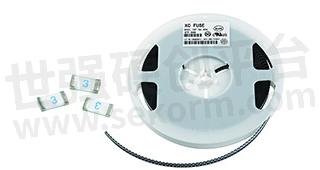How to Choose a Fuse Correctly?

In today's rapidly developing science and technology, fuses are applied in all aspects of people, and the correct selection of fuses is related to the personal and property safety of users! How to choose a fuse correctly?
1. When choosing a fuse, you first need to consider the safety certification of the fuse used in your product. Then, choose its shape and size, rated voltage (usually 250V), and breaking capacity (fast fuse or slow fuse), so that you can preliminarily choose a model.
2. Then select the upper limit and lower limit of the rated current of the fuse based on your circuit, so that you can determine the specific model and current,
3. Then select the fuse for testing and choose the most suitable one. Fuses, also known as fuses, are made of alloys with low melting points. When an overload or short circuit fault occurs in household electrical equipment, the current of the circuit increases, causing the fuse to quickly heat up to the melting point and melt, and timely disconnecting the power supply to achieve the purpose of protecting the circuit and electrical appliances. When purchasing a Shenzhen fuse in a household electricity meter, it should be estimated based on the total electricity consumption in the household. For example, in a household, there are four 25-watt light bulbs, one 60-watt color TV, one 80-watt fan, and one 90-watt refrigerator installed. When starting at the same time, the total power consumption is 330 watts, and the working current of the circuit is 1.5 amperes. Generally, a fuse of about 2 amperes should be used.
Briefly explain the general principle of selection: first, it should match the overload capacity of the protected object, so that the protected object can be reliably protected throughout the entire range. It should be prevented from eXCeeding the level of the circuit breaker and expanding the scope of power outage accidents. Coordination and cooperation should be carried out between all levels of protection. When a fault occurs, the lower level should first fuse. In distribution systems with low short-circuit currents and high fault rates, priority should be given to selecting those that are easy to assemble and disassemble. In distribution systems with high short-circuit currents, fuses with high sectioning capacity should be selected, and if necessary, current-limiting devices can be used. A single direct starting motor with a melt-rated current of 1.5-2.5 times the rated current of the motor. When using a fuse, users should always pay attention to the operation of the fuse, in order to promptly identify the cause and replace the fuse in case of circuit failure, ensuring the safety of life and property!

Fig.1
- +1 Like
- Add to Favorites
Recommend
- Determine if the Fuse is Burning (Fuse)?
- The Difference between Fuses and Fuses
- Repair Methods for Fuses -0805 Fuses
- Very Fast Acting Fuse PICO® II Fuse Series, Designed for Battery Management System | Littelfuse
- Calculation Method for Melt Current of Fuse Fuses
- The Difference between Self Recovery Fuse and Blown Fuse
- The Location where the Fuse is Connected to the Circuit and Connection Method of Patch Fuse in Circuit
- Littelfuse expands its fuse manufacturing operation in China, Cuting Customer Order Fulfillment Lead Time by Half
This document is provided by Sekorm Platform for VIP exclusive service. The copyright is owned by Sekorm. Without authorization, any medias, websites or individual are not allowed to reprint. When authorizing the reprint, the link of www.sekorm.com must be indicated.



















































































































































































































































































































































































































































































































































































































































































































































































































































































